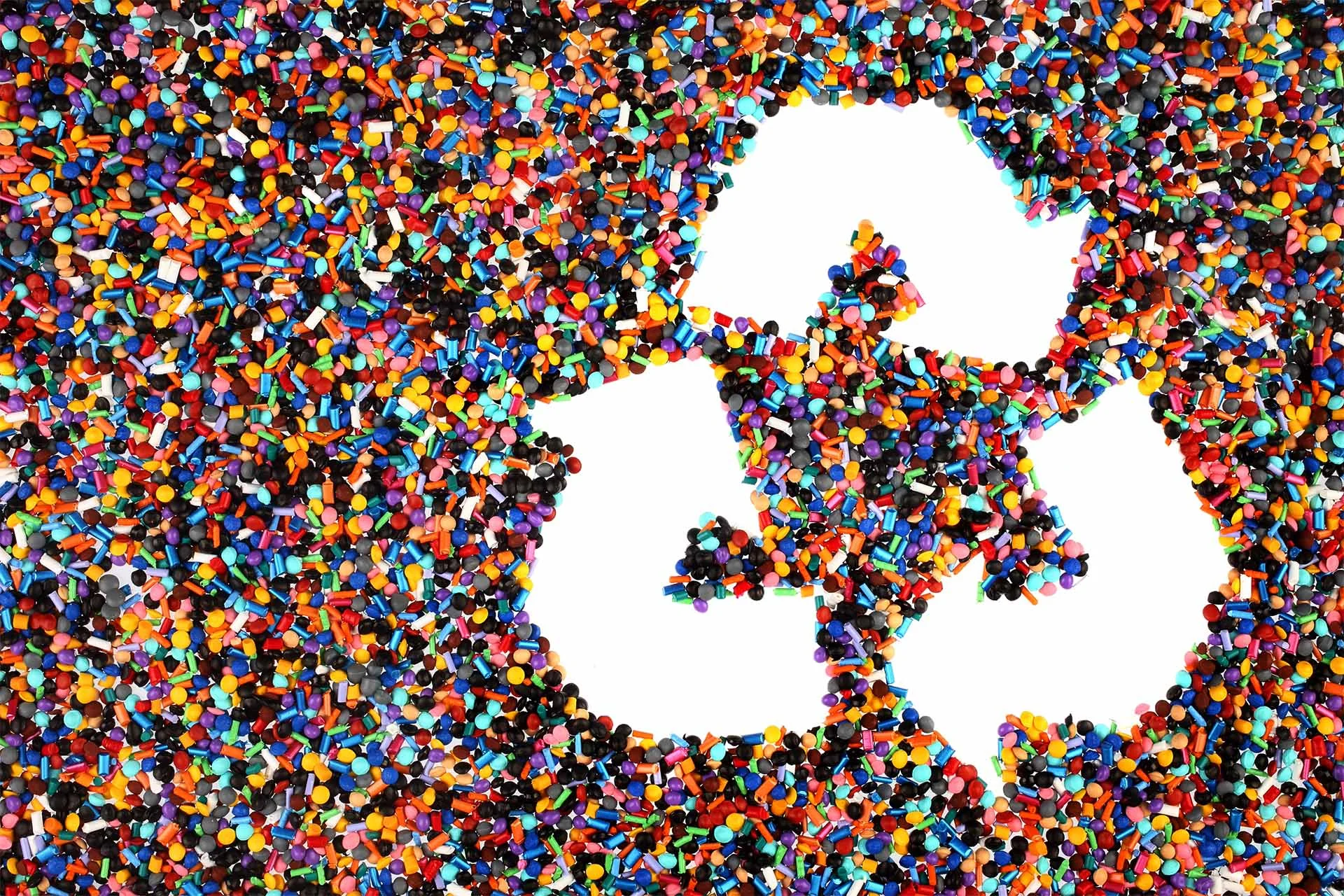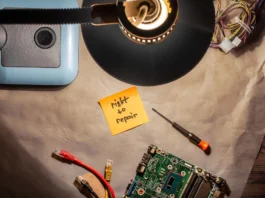Could a simple reaction with air and a low-cost catalyst finally solve our plastic nightmare? If you’ve ever wondered whether we’ll ever get rid of those mounds of single-use containers and soda bottles piling up worldwide, you’re not alone. For decades, we’ve been told, “Just recycle,” yet only a fraction of plastic sees a second life. But now, scientists from Northwestern University have zeroed in on something so straightforward it almost sounds too good to be true: a method that uses air moisture to break down polyethylene terephthalate (PET) quickly, generating valuable new materials in the process.
Since we rely on plastic for almost everything, from water bottles to phone cases, breakthroughs like this can bring hope. And while we’ve heard all sorts of big claims in the recycling world, it’s the simplicity of this approach that sets it apart. No toxic solvents. No punishingly high temperatures. And, reportedly, a 94% efficiency in just four hours. It’s not a pipe dream; it’s a lab-tested process that harnesses a cheap molybdenum-based catalyst—plus everyday air—to transform plastic waste into fresh resources.
A Brief Glimpse into Our Plastic Maze
Since about seven decades ago, our global plastic production has soared from a tiny 2 million tons a year to a massive 368 million. That number, experts say, could quadruple by 2050. The United States alone generated over 35 million tons of plastic waste in 2018—over 12% of its total municipal waste. These numbers might be mind-numbing, but behind every ton of plastic sits a heavier toll on wildlife, waterways, and climate patterns. That mountain of styrofoam cups, drink bottles, and packaging film? Most eventually lands in oceans or incinerators.
In many nations, the gap between production and effective recycling is sobering. Even in the European Union, which touts some of the better waste-management policies, only around 41% of plastic packaging was recycled in 2019. A big reason is that current recycling is complicated, whether it’s sorting different plastic types or coping with soiled packaging. Traditional recycling systems often degrade plastic over repeated rounds of reprocessing, so eventually, that plastic chunk can’t be recycled anymore. From an engineering standpoint, we’re facing a tall order: how do we handle the chemical complexity of plastic?
PET Takes Center Stage
Among the pantheon of plastics, PET stands out in both usage and waste. You’ll find it in beverage bottles, food wrappers, synthetic fabrics, and a range of consumer goods. Globally, we produce nearly 70 million tons of PET each year. It dominates the beverage market with a hefty share of around two-thirds. But success has its costs: used PET frequently ends up in landfills or incinerators. We might rinse and toss our bottle in a recycling bin, but the odds of that piece of plastic being reborn are dishearteningly low.
Why PET? It’s strong, clear, cheap, and stable. The flipside is that stability translates to a big challenge when trying to break it down. Traditional mechanical recycling can degrade PET’s polymer chains, diminishing plastic quality over time. Chemical recycling has the potential to reclaim higher quality feedstock, but it usually demands high heat, harsh chemicals, or energy-hungry processes. So, the typical storyline is that many well-intentioned recycling programs find themselves stuck with leftover scraps they can’t feasibly reprocess. And that’s where Northwestern’s new approach breaks the mold.
How the Air-Moisture Recycling Method Works
At first glance, the new technique sounds almost magical: place PET plastic together with a special catalyst in an environment that’s simply moist air. Wait a few hours. The plastic transforms into something valuable. According to the researchers, the core ingredient is a molybdenum compound supported on activated carbon—an affordable and readily available material. This catalyst interacts with the PET polymer chains, breaking them up. Meanwhile, moisture from the air helps convert these plastic fragments into terephthalic acid (TPA).
Terephthalic acid is crucial here: it’s a building block in new PET, as well as other more advanced polymers. By capturing TPA so cleanly, you can funnel it right back into new materials or even into different sectors. The scientists say it’s basically a closed loop. If all goes according to plan, that means no more new fossil fuels burned to create brand-new PET. Instead, we can keep recirculating the same molecules.
The Magic of Molybdenum

Chemists have long turned to transitional metals for catalyzing tricky reactions, but many are either expensive, short-lived, or come with environmental baggage. Molybdenum is generally more abundant and cheaper than metals like platinum. Early experiments by the research team proved that their molybdenum catalyst could handle repeated cycles without losing steam. This reusability is key to cost-effective scaling. Throw in the fact that the entire process is free of the typical harsh solvents, and you have a major improvement over older methods that might release toxins or require enormous energy to keep them at 200°C or more.
Time and Efficiency: The Impressive Stats
One of the main reasons chemical recycling never took off is that it’s historically slow and not particularly efficient. Yet Northwestern’s process claims a 94% recovery in just four hours. To put that in perspective, many standard chemical recycling approaches might take 24 hours or longer, yield far lower outputs, or require such high temperatures that the energy input outweighs the environmental gains. This new approach is able to do more with less. The finishing touch is that everything runs at a far lower temperature—just warm enough for the reaction, not scalding. That cuts emissions and energy costs.
The Potential for Mixed Plastics
One of recycling’s biggest headaches is that different plastics often demand different processes. PET is distinct from polypropylene, which differs from polystyrene, and so on. This means you typically need thorough sorting, a labor-intensive and costly step. The researchers behind the air-moisture system suggest it could handle certain blends of plastic without strict separation. If that’s indeed feasible, it could slash operational expenses and complexity. Large-scale recycling facilities—especially in developing nations—would find it easier to adopt.

A Step Toward Circular Economy
The phrase “circular economy” might sound like a trendy buzzword, but the concept is vital: keep materials in continuous use so we extract fewer resources and produce less waste. If plastic recycling can become both more efficient and cheaper, then reusing plastic becomes significantly more attractive to manufacturers. Imagine a world where producing a new soda bottle from recycled TPA is cheaper than extracting fresh oil or gas. That’s the sort of tipping point that can transform industries.
This approach, by skipping high-energy demands and toxic chemicals, addresses multiple pain points. Not only do we reduce the landfill footprint, but we also carve down carbon emissions. Traditional plastic manufacturing produces large amounts of greenhouse gases; reusing existing plastic cuts that usage dramatically. On top of that, we preserve the quality of recycled plastic, meaning fewer resources wasted and fewer mechanical downgrades.
Addressing the Elephant in the Room: Scalability
Of course, the big question is, can we do this at scale? A lab success doesn’t always guarantee a real-world fix. The researchers are optimistic. The catalyst is cheap, they say, and can be reused multiple times. The entire process runs at moderate conditions and doesn’t require fancy extra steps. Early pilot plants might come online in a few years if funding and regulatory approvals line up.
One might imagine local or regional recycling hubs that feed thousands of tons of PET into a reactor, only to see neat TPA come out the other end. That TPA could be trucked to a polymer facility to produce brand-new resin for packaging, textiles, or other goods. If that circle closes cost-effectively, we’d see a huge jump in recycling rates. After all, it’s not a consumer behavior shift alone that we need; it’s a system that actually stands ready to reprocess everything effectively.

What This Means for You and Me
The normal person—busy with life’s daily hustle—may not realize how big a shift this could spark. For decades, activists and scientists have pleaded for alternatives to landfilling or incinerating plastic. Over time, the tension around plastic waste became overwhelming, with many deciding that recycling, as we do it now, is basically broken. If advanced methods like the air-moisture approach spread, we might see more confident recycling. We could trust that the plastic we rinse and toss in the bin will actually come back as new products. That changes attitudes and fosters a culture that values resource stewardship.
Sure, it won’t solve all environmental issues. We’ll still need to manage the staggering volume of single-use plastic we churn out. And we must address other plastic types, not just PET. But it’s a step forward—one that might unify everyday recycling with real circular outcomes.
The Broader Landscape
The technology likely needs partners: municipalities, waste management agencies, beverage companies, and chemical manufacturers. Everyone has a stake in making it profitable. Funding for scaled-up demonstration plants would come from both private investors and government grants. Some places may push for zero-waste laws or strong plastic regulations that encourage the uptake of advanced recycling. Meanwhile, emerging markets might embrace the process, skipping older mechanical recycling altogether.
We may also see interest from major beverage companies wanting to tout closed-loop supply chains. The rise of “bottle-to-bottle” recycling has already begun with mechanical means, but an approach that yields purer monomers is better for quality control. Consumer goods brands are always looking for greener ways to meet their corporate sustainability pledges.
Obstacles to Overcome
- Access to PET: We still rely on a decent supply of sorted PET. Even if the process can handle blends, too many contaminants can disrupt the reaction.
- Economic viability: The method must hold up against established recycling or virgin plastic production. If virgin plastic remains dirt cheap, adopting new processes could be slow.
- Public awareness: People must be confident that recycling is worth the effort. Decades of greenwashing have left many jaded. A proven, high-yield method could change that narrative.
- Integration with existing infrastructure: We need to figure out how to adapt current recycling plants or whether new facilities must be built from scratch.

A Catalyst for Change
While it might seem that advanced methods are popping up everywhere—enzyme-based recycling, pyrolysis, or chemical processes—this air-based approach shows fresh promise. It addresses multiple pain points in plastic recycling: complexity, cost, inefficiency, pollution. And it might do so at scale. If so, we’re dealing with far more than a scientific novelty. We’re talking about a root-level shift in how we think about plastic waste.
The ultimate goal is straightforward: transform plastic from a one-and-done nuisance into a truly renewable resource. That’s what the term “circular economy” is all about. Instead of tapping new fossil fuels to churn out more plastic, we keep reusing what we already extracted. And if we can do that with less energy, fewer toxins, and minimal greenhouse emissions, so much the better.
An Invitation to Hope (and Action)
Often, news about the environment feels bleak, with oceans swirling with microplastics and entire ecosystems threatened by the slow degrade of these man-made polymers. But research like Northwestern’s indicates that innovation can thrive if we keep pushing. Technology alone won’t fix everything, but it can strip away excuses for inaction. The old argument that plastic is too hard to reprocess might fade away if we have a better, cheaper method.
In your day-to-day, you might not see these labs or know the scientists, but each time you choose to recycle, you’re feeding a pipeline that could become far more efficient in the near future. If local governments or nonprofits are championing advanced recycling pilot programs, supporting them can help. In short, it’s about bridging the lab breakthroughs to real-world solutions.
So, next time you watch a soda bottle rattle around the recycling bin, picture a near future where your bottle is part of a nearly closed loop. A future where air moisture, not toxic solvents, breaks that bottle down and returns it to brand-new form. Where the empty container under your sink might well be the same plastic that was once a water bottle, or maybe even a textile. That’s the promise swirling around the new method.
Could an everyday resource—moisture in the air—be the quiet solution to a worldwide crisis? Right now, teams like Northwestern are showing us how simple, effective transformations can bring plastic recycling to near perfection. If this approach reaches production lines, we might be on the verge of a bigger shift than we ever imagined.
The next steps are ours to take: from local-level action to federal policy, from brand accountability to consumer awareness. If you’re looking for hope in the environmental realm, this might be it—an actual fix, not just a catchy pledge. Will we seize it? That depends on all of us: scientists who develop it, industries that adopt it, governments that fund it, and citizens who champion it.
It’s not a fairy tale. Air-based plastic recycling is real, tested, and it might be arriving faster than we think. Let’s usher it forward.






If it’s so efficient, why aren’t we using it already? What’s the catch?
So moisture in the air can break down PET… but my shampoo bottle still outlives empires?
How long before oil companies buy the patent and bury it?
about time we move past just recycle and into actually works territory
Okay but… why are we just hearing about this now? Feels like this tech should already be everywhere.